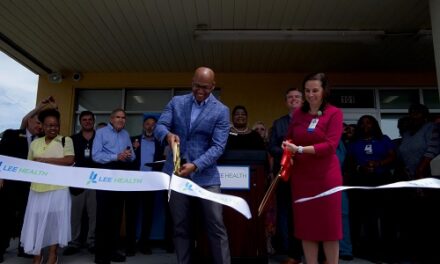It’s time that Orthopedics be Considered a Primary Care Specialty so that Seniors Can Get Early and Proper Diagnosis and Treatment
August 4, 2021 – People may refer to life after retirement as the “golden years,” but aging of bones, muscles, joints, ligaments, and nerves – particularly in the hands, wrists, and shoulders — exposes seniors to a variety of musculoskeletal disorders that greatly affect quality of life and make a person’s later years feel like anything but “gold,” says noted orthopedic surgeon Alejandro Badia MD.

“That’s why it is paramount seniors contact an orthopedic specialist for early treatment of those aches and pains that interfere with quality of life,” emphasizes Dr. Badia, who specializes in addressing disorders of the upper limbs and serves as founder and chief medical officer of the Badia Hand to Shoulder Center and OrthoNOW®. “Don’t depend on your family doctors about orthopedic issues, but rather seek their referral to an orthopedic subspecialist that would be appropriate to consult.” Miami-based OrthoNOW® is one of the nation’s first practices developed solely to provide comprehensive outpatient and urgent orthopedic care and is opening associated facilities throughout the country.
Dr. Badia cites development of skeletal diseases like osteoarthritis, rheumatoid arthritis, tendinitis, and osteoporosis, which thins bones and makes them more fragile; a reduction in muscle mass by as much as 45 percent – what some experts call the “sarcopenia of old age;” and a higher risk of fractures as common aging problems that can cause debilitating pain; result in significant loss of upper-limb mobility, function, and strength; and seriously affect a person’s physical independence.
“The population in this country is rapidly getting older, and their orthopedic issues are unique, requiring the care of physicians trained in musculoskeletal disorders,” Dr. Badia says
Researchers agree. In a study published in a November 2020 edition of Arthritis & Rheumatology, for example, authors indicate musculoskeletal conditions create an “enormous global burden of disability,” with an estimated 1.3 billion “prevalent cases” accounting for more than 121,000 deaths in 2017 and nearly 139 million years lost to musculoskeletal disease, disability, and early death.
“But it is a situation that is correctable with proper, early diagnosis and treatment by orthopedic physicians,” says Dr. Badia. “It was for this reason – to provide patients with easy access to specialists in musculoskeletal conditions – that OrthoNOW® was founded. Elderly with arthritic joint pain and other musculoskeletal conditions are not getting their problems resolved by their primary or general urgent care doctors. In essence, orthopedics should become the primary care specialty for musculoskeletal disorders.”
He points to an issue of the Journal of Clinical Imaging Science in which scientists write: “Early diagnosis [of musculoskeletal disorders] can avoid delay[s] in treatment…associated with increased morbidity and mortality. Besides, a better understanding of musculoskeletal diseases can lead to the implementation of effective preventive measures, thus reducing public health expenditure, and improving the quality of life in the elderly.”
Many people presume that the inflammation, swelling and stiffness of arthritis in the joints, including those of the fingers, and increased thinning of bones are the primary threats posed by aging to the upper limbs, “but orthopedic experts know better,” Dr. Badia says.
“In fact, much concern is focused today on the increasing incidence of wrist fractures among the elderly, particularly fractures involving the forearm’s largest bone (the radius bone) where it joins the wrist (distal end). A study published in a January 2019 issue of Orthopaedics indicates that distal radius fractures are “the second most prevalent fracture” in persons 60 years of age and older and affect approximately 85,000 elderly Americans annually.
“A greater risk of falls is, in part, to blame for upper-limb fractures in the elderly, but many older individuals also develop osteoporosis or osteopenia, which make their bones, including those of the wrists, more susceptible to low-impact, low-energy trauma,” Dr. Badia says In fact, a study in the British Medical Journal calls wrist fractures the most common of upper-limb bone injuries in the elderly and indicates the role these fractures play in an individual’s functional decline.
“Distal radius fractures are particularly challenging to manage, which is why seniors especially should seek care from an orthopedic specialist who has the proper background to treat such fractures,” Dr. Badia advises.
Meanwhile, the ravages of time also take their toll on hands. Dr. Badia refers to an abstract in The Journals of Gerontology: Series A, in which scientists describe the critical role that the hand plays in “quality of performance in daily living skills, work-related function, and recreational activities” and discuss how aging causes “degenerative changes in the musculoskeletal, vascular, and nervous systems.” These structural and neural changes effect an overall decline in hand function, including hand grip and pinch strength, dexterity, and motor control, Dr. Badia explains.
On the positive side, advances in treatment of age-related disorders make this “no better time in which to live,” says Dr. Badia. As an example, he notes a study, published in 2020 in Protein & Cell, that suggests a combination of two experimental, molecular-based drugs may be successful in reversing the breakdown of cartilage caused by osteoarthritis. It is cartilage that provides a cushion for stress on bones and joints.
Authors of another 2020 study, this one in Science Advances, report their work on creating new drug-delivery systems that could enhance treatment – or even delay the onset – of disease like osteoarthritis and rheumatoid arthritis, Dr. Badia states.
Despite all the best efforts, no one yet has discovered the fountain of youth, laughs Dr. Badia, but individuals can take steps to minimize the impact of aging on their upper limbs and the rest of their musculoskeletal system. He advises:
· Stay active. Exercise, including swimming and other water-related activities, can help maintain and even increase muscle mass.
· Walk, walk, and walk some more. Walking is a weight-bearing exercise that can strengthen bones.
· Maintain a weight average for one’s age and height. Obesity puts extra stress on bones, muscles, and joints already weakened by age.
· Consider closeting the tennis racquet and seek out more low-impact activities like biking. Tennis is a high-impact sport and can be tough on upper limbs, especially the dominant shoulder and elbow.
“And don’t ignore those chronic aches and pains. Like unrepaired, leaking faucets, they likely will become only worse with age. Avoid the hospital emergency room unless you suspect a hip fracture or have an open wound, or family practice doctor’s office and, instead, seek out an orthopedic specialist for examination. Early treatment by the proper orthopedic physician can go a long way in preventing age-related musculoskeletal disorders from getting out of control and damaging quality of life in your senior years,” Dr. Badia says.
Alejandro Badia, MD, FACS, is an internationally renowned hand and upper-limb surgeon and founder of Badia Hand to Shoulder Center and OrthoNOW®, a walk-in orthopedic care clinic. Dr. Badia specializes in treating all problems related to the hand and upper extremities, including trauma, sports injury, joint reconstruction, nerve injuries and arthroscopic surgeries. www.OrthoNOWcare.com, www.drbadia.com.


























